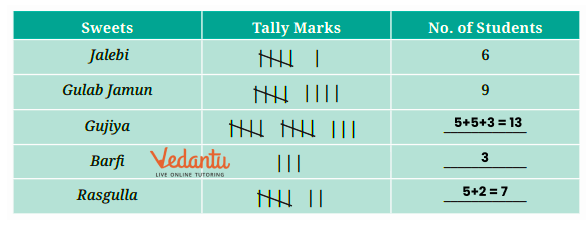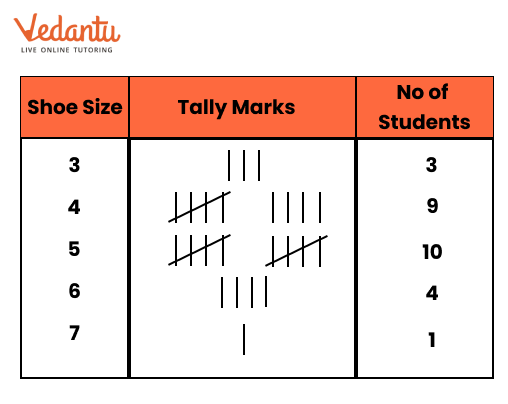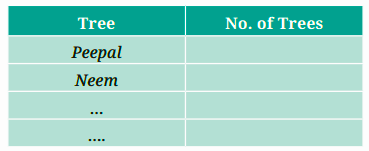NCERT Solutions for Chapter 4 Maths Class 6 - FREE PDF Download
FAQs on NCERT Solutions for Class 6 Maths Chapter 4 Data Handling And Presentation Ex 4.1
1. What is the first step in data handling?
The first step in data handling is collecting and organising data, which is the focus of Exercise 4.1.
2. What is the main focus of Exercise 4.1 in Chapter 4?
Exercise 4.1 focuses on the collection and organisation of data, introducing students to the process of handling data efficiently.
3. Why is organising data important in Exercise 4.1?
Organising data helps in systematically arranging the collected information, making it easier to interpret and analyse.
4. What methods are taught for organising data in Exercise 4.1?
One key method introduced is using tally marks, which helps in visually representing the frequency of collected data.
5. How does collecting data help in the data handling process?
Collecting data is the foundational step in understanding any set of information. Without collecting, organising or analysing data would not be possible.
6. What are tally marks, and how are they used in Exercise 4.1?
Tally marks are a way of recording and organising data by grouping items into sets of five. They make counting easier and more organised.
7. Can tally marks be used for real-life data collection?
Yes, tally marks are commonly used in everyday situations like counting votes, tracking inventory, or marking attendance.
8. What is the significance of tally marks in data organisation?
Tally marks simplify data organisation by grouping large numbers into easily countable sets, making the data more manageable.
9. How does Exercise 4.1 help students understand data collection?
This exercise uses real-life examples to show how data is collected and organised using simple methods like tally marks.
10. How do NCERT Solutions help with Exercise 4.1?
Vedantu's NCERT Solutions for Exercise 4.1 provides step-by-step guidance on how to collect and organise data, particularly through the use of tally marks.
11. What kind of questions are included in Exercise 4.1?
Exercise 4.1 includes questions that ask students to collect data and organise it using tally marks and simple tables.
12. How can organising data using tally marks improve problem-solving skills?
By using tally marks, students learn to organise and manage data more efficiently, which enhances their ability to analyse information and solve problems.






















